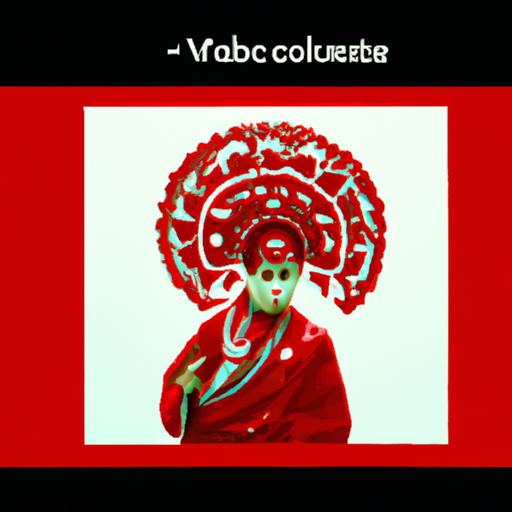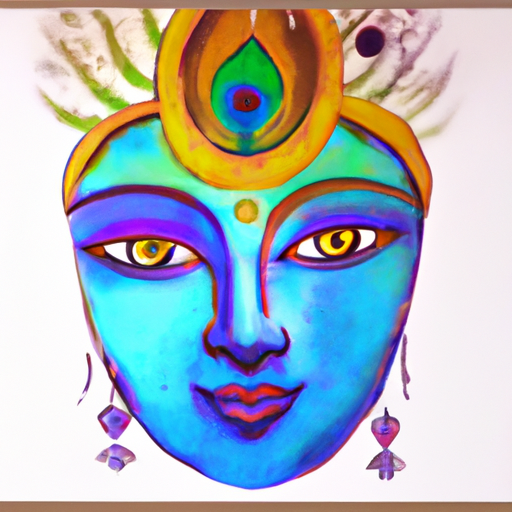
-
Table of Contents
- Cultural Influences on Graphic Design: Exploring Indigenous Art
- The Power of Indigenous Art
- Indigenous Art and Graphic Design
- Color Palettes
- Patterns and Motifs
- Symbols and Icons
- Case Studies: Indigenous Art in Graphic Design
- 1. The 2018 Commonwealth Games
- 2. The New Zealand All Blacks Rugby Team
- 3. The Inuit Art Foundation
- The Value of Indigenous Art in Graphic Design
- Conclusion
Cultural Influences on Graphic Design: Exploring Indigenous Art

Graphic design is a powerful tool for communication, and it is heavily influenced by the cultural context in which it is created. One fascinating area of cultural influence on graphic design is indigenous art. Indigenous art is a rich and diverse form of expression that reflects the unique cultural heritage of indigenous communities around the world. In this article, we will explore the ways in which indigenous art has influenced graphic design, and the valuable insights it offers to designers.
The Power of Indigenous Art
Indigenous art is deeply rooted in the history, traditions, and spirituality of indigenous cultures. It encompasses a wide range of artistic practices, including painting, sculpture, textiles, and pottery. Indigenous art often incorporates symbols, patterns, and motifs that hold significant cultural meaning. These art forms have been passed down through generations, serving as a means of storytelling, preserving cultural identity, and connecting with the spiritual world.
One of the key characteristics of indigenous art is its strong connection to nature. Many indigenous cultures have a deep reverence for the natural world and view it as an integral part of their identity. This is reflected in their art, which often features depictions of animals, plants, and landscapes. The use of vibrant colors and intricate patterns in indigenous art is also a testament to the rich biodiversity and cultural diversity of these communities.
Indigenous Art and Graphic Design
The influence of indigenous art on graphic design can be seen in various aspects, including color palettes, patterns, and symbols. Designers often draw inspiration from indigenous art to create visually striking and culturally relevant designs. By incorporating elements of indigenous art into their work, designers can pay homage to indigenous cultures, raise awareness about their rich heritage, and challenge stereotypes and misconceptions.
Color Palettes
Indigenous art is known for its bold and vibrant color palettes. These colors are often derived from natural pigments found in the local environment, such as red ochre, yellow clay, and plant dyes. Designers can draw inspiration from these color palettes to create visually appealing and culturally authentic designs. For example, a graphic designer working on a project related to indigenous cultures in Australia might use earthy tones like red, orange, and brown to evoke the spirit of the Outback.
Patterns and Motifs
Patterns and motifs play a significant role in indigenous art. They are used to convey stories, represent cultural beliefs, and establish a sense of identity. These patterns often feature geometric shapes, repetitive designs, and intricate details. Graphic designers can incorporate these patterns into their work to add visual interest and cultural depth. For instance, a designer working on a branding project for a company that promotes indigenous tourism could use traditional patterns to create a sense of authenticity and connection to the local culture.
Symbols and Icons
Symbols and icons are powerful tools for communication, and they are widely used in indigenous art. These symbols often represent important cultural concepts, such as spirituality, community, and the natural world. Graphic designers can leverage these symbols to create visually compelling designs that convey specific messages. For example, a designer working on a poster for an environmental campaign could use indigenous symbols to highlight the importance of protecting the Earth and preserving its biodiversity.
Case Studies: Indigenous Art in Graphic Design
Several notable examples demonstrate the successful integration of indigenous art into graphic design. These case studies highlight the impact of indigenous art on visual communication and the potential for cross-cultural collaboration.
1. The 2018 Commonwealth Games
The 2018 Commonwealth Games held on the Gold Coast, Australia, showcased the rich cultural heritage of the indigenous peoples of Australia. The event’s visual identity incorporated indigenous art elements, including patterns, symbols, and colors. The use of indigenous art in the design not only celebrated the host country’s cultural diversity but also promoted reconciliation and understanding among different communities.
2. The New Zealand All Blacks Rugby Team
The New Zealand All Blacks rugby team is known for its iconic silver fern logo, which is inspired by Maori culture. The logo features a stylized silver fern leaf, a symbol of national identity in New Zealand. The design not only represents the team but also pays homage to the indigenous Maori people, who have a deep connection to the land and nature.
3. The Inuit Art Foundation
The Inuit Art Foundation is a Canadian nonprofit organization dedicated to promoting and preserving Inuit art. The foundation’s visual identity incorporates Inuit art elements, such as traditional patterns and symbols. By using indigenous art in their branding, the foundation effectively communicates its mission and values while supporting the indigenous artists it represents.
The Value of Indigenous Art in Graphic Design
The incorporation of indigenous art into graphic design offers several valuable insights and benefits:
- Cultural Appreciation: By incorporating indigenous art into their designs, graphic designers can show respect and appreciation for indigenous cultures. This helps to challenge stereotypes and misconceptions while promoting cultural diversity and understanding.
- Authenticity: Indigenous art adds a sense of authenticity and cultural depth to graphic design projects. By drawing inspiration from indigenous art, designers can create visually compelling designs that resonate with audiences and convey specific messages.
- Sustainability: Indigenous art often reflects a deep connection to the natural world. By incorporating elements of indigenous art into their work, designers can raise awareness about environmental issues and promote sustainable practices.
- Community Empowerment: Collaborating with indigenous artists and communities can empower them economically and socially. By supporting indigenous art and incorporating it into their designs, designers can contribute to the preservation and promotion of indigenous cultures.
Conclusion
Indigenous art has a profound influence on graphic design, offering a rich source of inspiration and cultural depth. By incorporating elements of indigenous art into their work, designers can create visually striking and culturally relevant designs that challenge stereotypes, promote cultural diversity, and convey specific messages. The examples and insights discussed in this article demonstrate the power of indigenous art in graphic design and the valuable contributions it offers to the field. As designers continue to explore and appreciate indigenous art, they can create designs that not only communicate effectively but also celebrate the rich cultural heritage of indigenous communities around the world.
